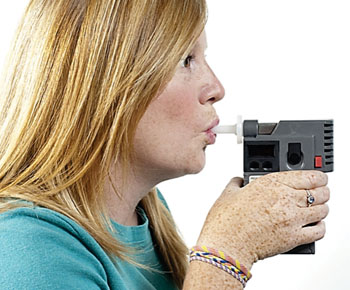Portable Breath Device Could Help Diagnose Diabetes
By LabMedica International staff writers
Posted on 25 Nov 2016
A new, portable breath analyzer has been developed that could someday help medical practitioners diagnose diabetes noninvasively without painful pinpricks, needles or other unpleasant methods.Posted on 25 Nov 2016
Many studies examining the hallmarks of diabetes in exhaled breath have shown that elevated levels of acetone are strongly linked to diabetes. Detecting the concentrations of any given substance in breath in a simple way, however, is a major challenge as breath contains a complex mix of compounds, including water, carbon dioxide and methane that can throw results off.

Image: A portable and compact breathalyzer device for measuring acetone in breath samples to diagnose diabetes (Photo courtesy of University of Oxford).
Biochemists at the University of Oxford (UK) working with the Oxford Medical Diagnostics, Ltd (Begbroke, UK) developed a portable and compact device for measuring acetone in breath samples. The device features a 7 cm long high finesse optical cavity as an optical sensor that is coupled to a miniature adsorption preconcentrator containing 0.5 g of polymer material. Acetone is trapped out of breath and released into the optical cavity where it is probed by a near-infrared diode laser operating at ∼1670 nm.
The scientists report that with an optical cavity mirror reflectivity of 99.994%, a limit of detection of 159 parts per billion by volume (ppbv) was demonstrated on samples from breath bags. Initial results on direct breath sampling are presented with a precision of 100 ppbv. The method is validated with measurements made using an ion–molecule reaction mass spectrometer. Data was presented on elevated breath acetone from two individuals following an overnight fast and exercise, and from a third individual during several days of routine behavior.
The measurements were a close match to those of the mass spectrometer and covered a wide range of concentrations, including those that would suggest a patient has undiagnosed type-1 diabetes, or have problems controlling their blood glucose. Adding to the practicality of the device, the scientists say it could be re-used many times. The study was published online on October 18, 2016, in the journal Analytical Chemistry.
Related Links:
University of Oxford
Oxford Medical Diagnostics













